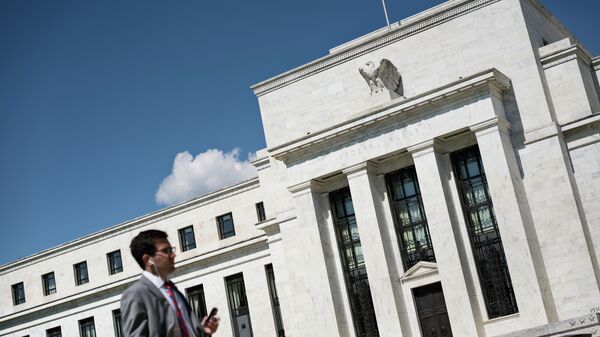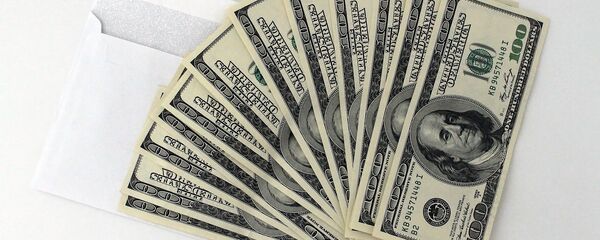Kristian Rouz - The US Federal Reserve has been adjusting its little-known tool on commercial bank excess reserves over the last several days due to rising borrowing costs in the open market. This comes as the US central bank continues raising its base borrowing costs - known as the Fed funds rate - while seeking to ensure the stability of the US financial system.
The US Federal Reserve's ongoing cycle of monetary tightening has been in the spotlight since its start back in December 2015. However, the central bank's less prominent tool - the interest rate on excess reserves - has drawn much less attention during the same period.
READ MORE: Looming Summer Travel Season to Set New Record, Boost US GDP
According to a report from TD Securities, the Fed might move its excess reserve rate for the second time in this tightening cycle. This comes as commercial bank excess reserves - or the money bank keep on the Fed's balance sheet - have declined to $1.9 trln.
This compares poorly to the Fed's bloated $4.37-trillion overall balance sheet, the lion's share of which is comprised of the Fed's holdings of US governmental bonds, or Treasury notes.
"The banking system as a whole may have enough reserves, but some banks may be paying up for fed funds," the report from TD Securities reads.
Commercial banks started to withdraw excess reserves from the Fed's balance sheet due to the higher borrowing costs, which has restrained the amount of central bank liquidity available to banks. At the same time, the rapidly growing economy has produced an elevated demand for loans from both the financial sector and Main Street economy, and banks need money to support their loan issuance.
READ MORE: US Manufacturing Dips in May Amid Disruption in Car Assembly
The Fed's adjustment of its excess reserves rate could be aimed at slowing commercial bank withdrawals of money from the central bank's balance sheet. This despite the Fed under Chair Jerome Powell is seeking to reduce its assets - which increased from some $900 bln to $4.5 trln between 2008 and 2015. The Fed's goal is a gradual reduction of its balance sheet, while recent developments have been a bit too rapid.
During a news conference earlier this month, Powell said the central bankers thought one adjustment to the excess reserves rate was enough to curb bank reserve withdrawals.
"We don't expect to have to do it often or again, but we're not sure about that," Powell said. "If we have to do it again, we'll do it again."
This comes as some analysts have been concerned the Fed might lose control over borrowing costs in the open market. For example, after the most recent rate hike, the Fed's borrowing costs were set at 1.75-2.00 percent. However, last week, the average effective Fed funds rate (EFFR) was 1.92 percent -alarmingly close to the central bank's rate ceiling.
"The continued EFFR increase poses problems for the Fed," Mark Cabana and Olivia Lima of Bank of America Merrill Lynch wrote in a report last week.
The EFFR was also just 0.03 percent below what the Fed pays to commercial banks for parking their excess reserves at the central bank, meaning banks can find a better use for their money in the open market. Withdrawals of excess reserves also reflect bankers' confidence in the broader economy, as in riskier times they are willing to store their money with the Fed at almost any rate.
Subsequently, the Fed might increase its excess reserves rate, which would inevitably require further hikes of the Fed funds rate, which, in turn, would push overall borrowing costs in the economy higher - and could spur another round of commercial bank withdrawals of their money from the Fed.
READ MORE: Newly-Appointed New York Fed President Touts Moderate Policy Course
The cycle of US monetary tightening is accelerating, which could be good news for the Trump administration. Treasury officials have championed the robust economic activity, while also ramping up their issuance of US government bonds. This dampened the value of Treasuries, pushing both the bond yields and commercial borrowing costs up.
"I think it's an interesting question from a monetary policy perspective, but I don't think it has huge ramifications for the economy, the financial system, or the economic outlook," former President of the Federal Reserve Bank of New York William Dudley said.
All this suggests US borrowing costs could increase in an accelerated fashion over the next several months, supporting the profitability of fixed investment, savings strategies, and bond market transactions. It is, however, bad news for heavily-indebted individuals and companies, as refi costs are also poised to increase.




